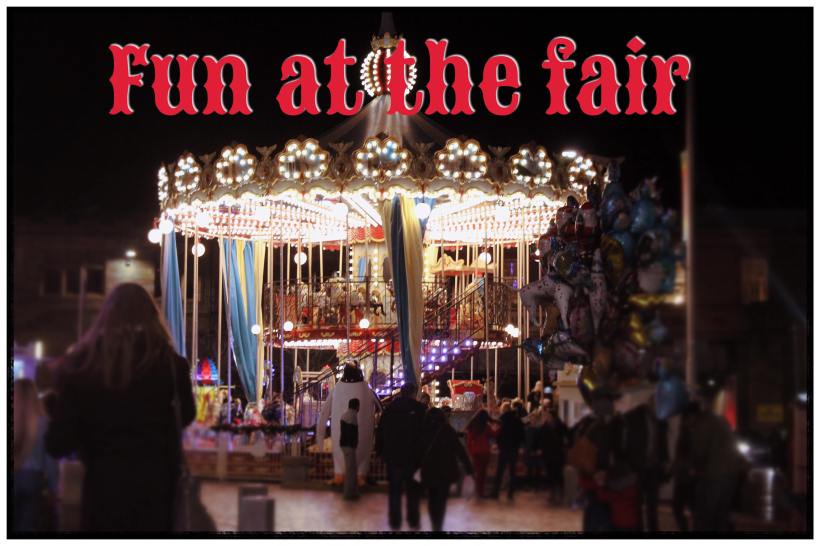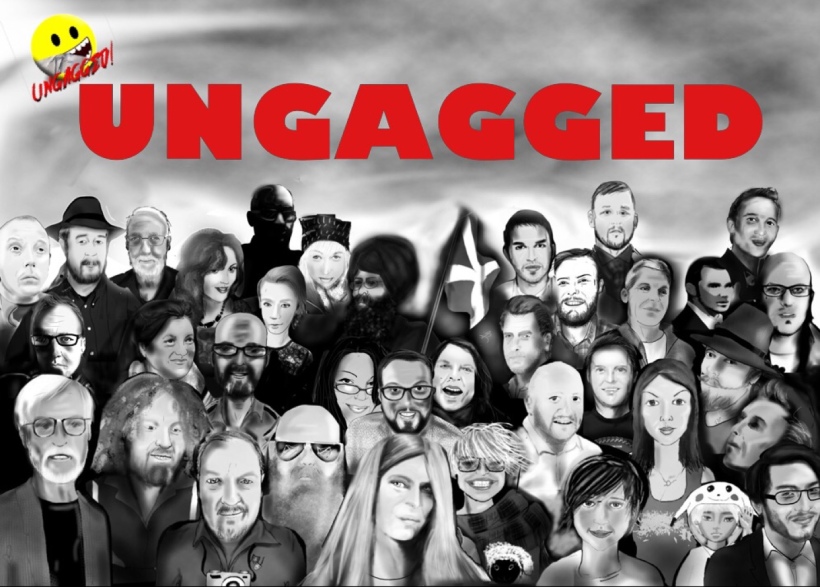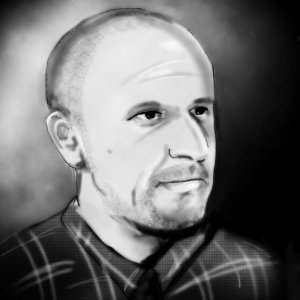
No place like home – but where is home when you are on wheels?
The shows, the carnival, the fairground integral parts to a gala, the Highland games, a village fete and important part of Scottish communities; essential components to local economies. What are the shows?
The flashing lights and ringing bells, the stall holders calling out to come to their stall. “Hook a duck, every one’s a winner!”, “Can you ring the bell? “Have a go!” The smell of candy floss, toffee apples, donuts. Hotdogs? Hamburgers? You aren’t sure but the smell of fresh fried grub makes your stomach ache even though you already had your dinner.
You wait though because you haven’t been on the big rides or in my case the sticky wall yet. You stand in that circle drum, everybody laughing, knowing what is coming, it starts off so slow. Turning a wee bit, the young boys look determined, ready to perform acrobatics to impress whatever wee lassie they are winching. The speed picks up, the floor suddenly drops away and the boys flip upside down, everybody starts screaming and laughing. The force of the spin has pinned you to the wall, you are trying to look around, someone to your left looks awfy peely wally, are the gonna…? Aw naw!
Wean’s running about with plush toys, their bounty’s won at different attractions. From shooting galleries to hammers; small and large to test your strength. Hook a ducks; a children’s favourite. Can you knock over skittles with a throw of the ball? Can you throw a ring round some whisky?

The annual Glasgow holiday is even called the Glasgow Fair. Where for generations Glaswegians went doon the water to Ayr, Rothesay, Troon, Saltcoats and other seaside towns. And every year there was a carnival in the Glasgow Green. A summer celebration, I don’t think i ever missed as a child.
I even have a jigsaw of me and my niece as wee tots on a big green helicopter, on a roundabout. It was the winter carnival though at the Kelvin Hall. This has now moved to the SECC and is better known as the Irn Bru carnival. Where it is still tradition to go with the family between Christmas and New Year.
With fairgrounds being so popular in Glasgow and the West, it should be no surprise that…
“An estimated 80% of show people are Glaswegians, living in about 50 privately-owned or leased yards in pockets to the east, south and north of the city.”
The community of folk who travel and operate the fairgrounds all over Scotland are facing ever increasing difficulties. Show folk have intrinsic links to their yards, carnival sites and surrounding communities. Although the nature of business for the modern showman has drastically changed from 100yrs ago, many still travel with their wagons to various towns and villages often occupying the same routes at the same times for many years. These businessmen and women operate in all aspects of trade, diversifying and settling in communities, some have coffee shops and catering businesses, some have property portfolios and 9-5 jobs.
But the thing that unites them is their community, their inherent sense of belonging, their language and perceptions of self, they will remember the carnival differently from me. They might remember the smell of diesel and the “put put” of the generator, (lighting set for the well versed). Showfolk will remember the hard work, the long build ups and pull downs, gathering with their friends and attending dances, the weather when they had to get towed by a tractor and moving to the next town or village.
Imagine being able to go to work where you can meet up with all your family, your extended cousins and aunties, kids you used to go to school with. It would be such a privilege to work a wee kids Ferris wheel that your great grandad also operated, imagine having that connection and sense of belonging. It’s so beautiful and should be treasured.
As a punter going to the carnival means different things to me than it would a showman. But I can clearly see the deep and varied traditions, I can appreciate the art of the stalls and could endlessly stare at the vintage graphics on display. But i am surprised to find that this amazing culture has no official status or protection.
Even though a distinct and unique culture, showmen aren’t afforded the same status as Irish travellers or Romany Gypsies. Fairground sites where showmen can also park their wagons alongside their valuable machinery are rapidly disappearing. Static year round yards where showmen can be secure in the knowledge their children have a stable and consistent education are rapidly being eradicated.
Showfolk face discrimination like many minorities, one story I was told that broke my heart was of a young kid going for her first day at a new school, her classmates made her feel welcome so much so that they invited her “to come throw stones at the gypsies”. At her own home, her own people.
The lazy stereotyping of the general population also doesn’t help. An increasing amount of show children are doing well at school, attending university and of those who don’t continue in eduction have a hard working ethos instilled in them from being part of a family business from a young age.
The fairground community is a vibrant, hardworking, complex part of Scottish society. The skills, knowledge and history so connected to Glasgow that in the Museum of Transport there is a whole display dedicated to Showfolk, their vehicles, their homes and the history of the fairground.
What now is seen as a trendy lifestyle choice, living off grid in eco friendly homes, maximising space and storage, the showfolk of Scotland have been doing for centuries, such as conserving water, recycling and up cycling. Although a modern chalet is more akin to a modern semi detached new build than an off grid earthen shed, Amazing Spaces and George Clarke should check out some of the innovative chalet design in various Glasgow yards.
Showfolk take such pride in the appearance of their stalls at a carnival, imagine the pride they have in their homes? Showman’s yards are like many estates within Glasgow, some immaculate, well maintained, tidy properties others not so pristine. Rides, trailers and machinery vital to their livelihood, kept close by for security purposes. They are nice places, where everybody knows your name , would help out in any situation and somewhere I’d want to live. This is a throwback to traditional Scottish Communities where every neighbour knew everyone on the street. Everyone knows everyone. If they don’t know you they ask “Who do you belong to?” and quickly a connection is established.
So imagine living somewhere for 37 years, establishing roots, having a short term lease throughout that tenure precluding you from investing in it, you become more of a maintainer or caretaker than an owner of that place. Moving into it as a dump. A black site, unsuitable for anything else so the council lets you park on it. But you still have to pay rent, council tax and have a licence to occupy. Then out of the blue, just because that place you have lived for all this time, is now trendy, you have to move. What are your options here? Move your kids from School, depart from your friends in the local community? Will your neighbour you have parked next to for 37 years be beside you again? Your next site will not be in The West End, nor will it necessarily be in the South side where you are but most likely the alternative will be in another black site – ghettoised in 2018.
Why write these thoughts you may ask, well this injustice is happening now to people in Glasgow, because when it comes to it they are people, like you and me, being told to move because that bit of land is now worth more to the council with them off it. This has happened in Patrick, Vinegar Hill to name but a few and it is now happening in Govan. The two adjoining yards in Govan, the Stringfellow’s and Johnstone’s are being closed, the council not allowing their lease to be renewed. The papers heralded the new development without initially reporting the impact on the people. The occupants for nearly four decades are being evicted. With limited options of another location. To be geographically displaced is one thing but when you think about what their options are most likely to another black site, not desirable (at that time) and without their ties to the local community and possibly their established businesses in that area, not much of a choice really! Will this be owned or will this be leased? If they do get somewhere else is there really any certainty over the future of showfolk and their established roots in Glasgow…
Not everyone who identifies as showmen travels with the fairground. Elderly folk retire to these yards and continue to be protected and looked after by their community.
This also goes hand in hand with other economic influences affecting showmen such as inconsistent licensing regimes across Scotland, all of which threaten their economic well being and way of life.










